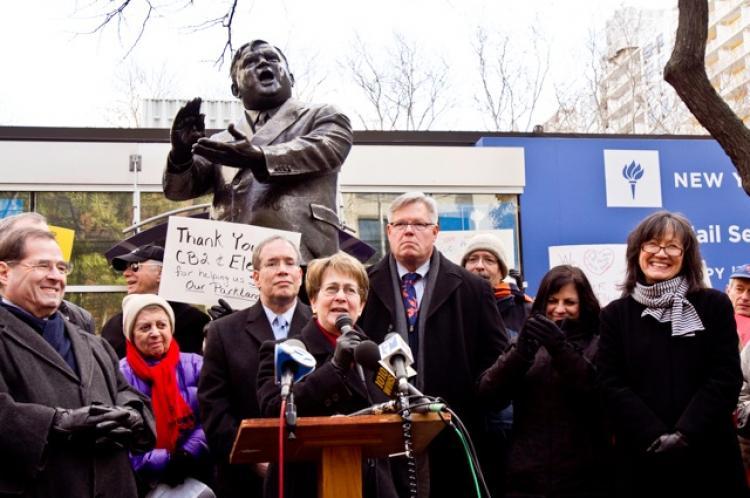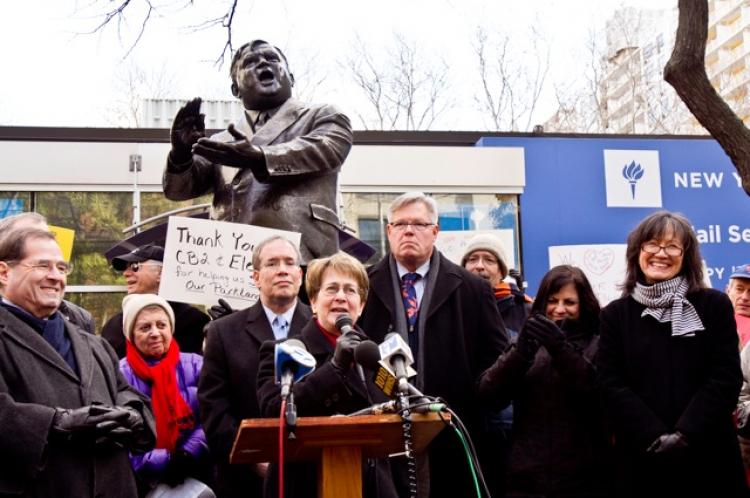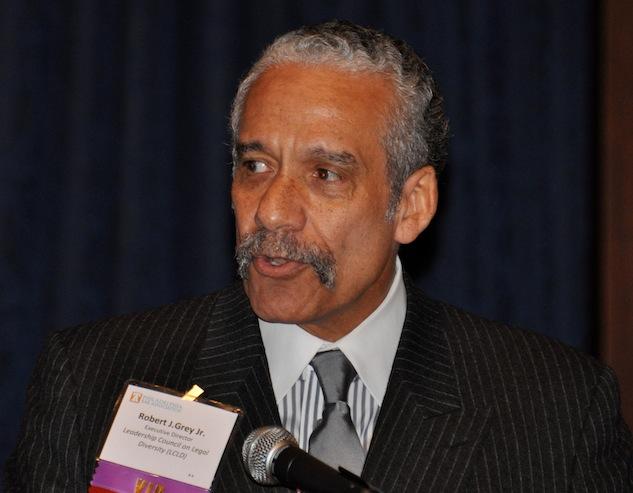NEW YORK—Elected officials, community board members, and Greenwich Village residents rallied on LaGuardia Place on Sunday to urge New York University (NYU) to remove six areas of land currently used as open public space from its NYU 2031 proposal, which aims to expand the university by its bicentennial in 2031.
The land under discussion is currently owned by the city’s Department of Transportation (DOT).
Jo Hamilton, the chair of Community Board 2, says that publicly owned land should remain public and shouldn’t be given to an institution.
According to Manhattan Borough President Scott Stringer, a task force led by his office in March issued a 33-page report with over 70 recommendations for NYU to keep the areas public.
The public space should be preserved “because parents need playgrounds, residents need open space, pet owners need dog runs, and our small businesses need to thrive,” Stringer said, adding that finding the right balance between university expansion and the preservation and protection of the interests of local communities is key.
“That’s the challenge, and we need the university to be full partners in that effort,” he said.
NYU Vice President Alicia Hurley responded to the community’s concerns in a statement, which said:
“As we proceed with refining our plans and preparing our submission for approval through the city’s Uniform Land Use Review Procedure, we will continue these conversations on a broad range of topics, including how to best improve publicly accessible open spaces. We remain committed to seeking a path forward that balances the needs of the community, NYU, and the city.”
According to New York state Assemblywoman Deborah Glick, when NYU was granted superblocks that demapped streets years ago, the deal was that these strips of land would remain open space.
“[People] want to live in Greenwich Village, they don’t want to live on campus,” she said.
The current public spaces were created following acquisition of the land by the DOT over 50 years ago, after the plan to build ramps for an expressway in SoHo had failed, noted the community board. Though the land was voted to be transferred to the Department of Parks and Recreation in 1967, the transfer did not come to fruition.
“Soon after community members banded together to make useful parks from unused land,” said Terri Cude, co-chair of Community Action Alliance on NYU Plan 2031. “They put in decades of sweat and love to put in the community garden on LaGuardia [and] the dog run on Mercer and Houston.”
Ellen Horan helps run the LaGuardia Corner community garden, which houses hundreds of flowers, vegetables, and fruit trees from spring to fall.
“We need to identify and preserve ribbons of green like these city-owned strips that can provide the interconnection of sunlight, deep earth, insects, bird life, that provide for cross-pollination amid densely populated areas,” she said. “It is these facts of survival that our gardeners teach kids from local schools when their classes come to our garden. We teach them that apples don’t come from the supermarket, and [that] plants and trees are essential to clean the air from carbon dioxide.”
Rep. Jerrold Nadler (D-N.Y.) called on DOT to transfer the land to the Department of Parks.
“We all know how little public parkland exists in Greenwich Village and how greatly the residents of the Village cherish that space,” he said. “The various uses of this parkland provide something for everyone. The only way we can be assured of the permanent use as parks is to designate it parkland.”
NYU plans to ask that six strips of land be transferred from the DOT to the university to further develop two residential superblocks between West Third and West Houston streets, as well as between the LaGuardia Place and Mercer streets. These areas host several public spaces, including the LaGuardia Corner Garden Park, a playground, and a dog run, among others.
NYU has proposed to create new open space, but Hamilton noted that the institution does not have a good track record in creating such spaces.
Tobi Bergman, chair of the Community Board 2 Parks Committee, argued that open space created by NYU would not be the same, even though the university has indicated that they would aim to provide more well-maintained, accessible areas for public use.
“If you go to campuses all around this country, they’re beautiful, they’re nice to go on, people are invited on them, but when you’re there, you know you’re on a private institution space,” Bergman said. “It’s just a difference of how you feel when you’re in a space that’s yours, that’s the democracy of parks.”





